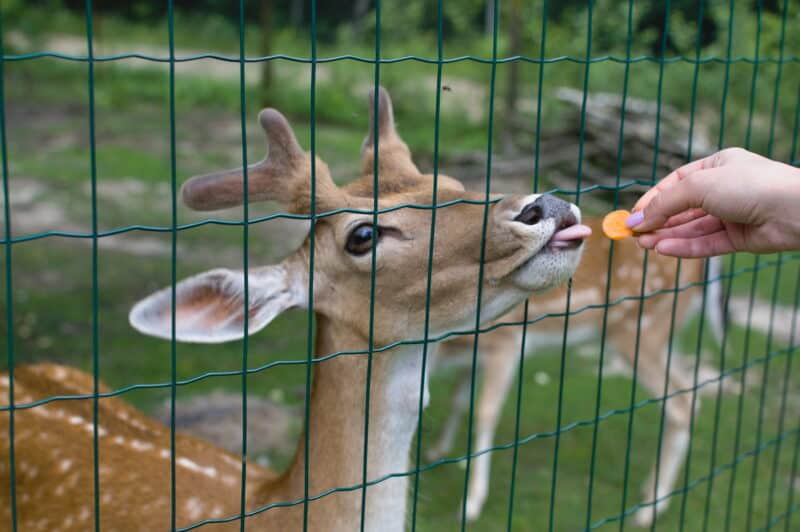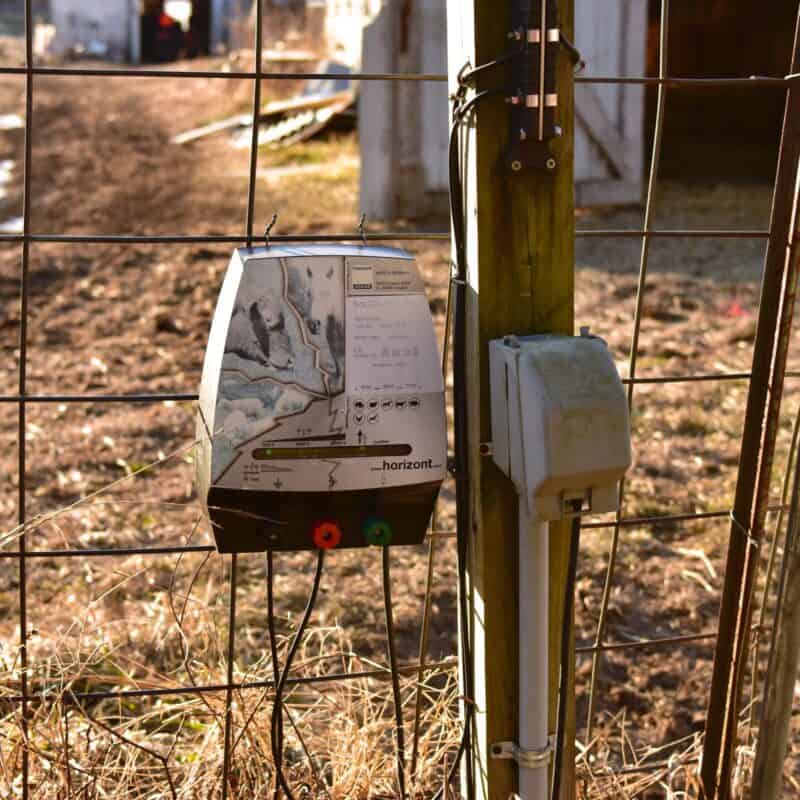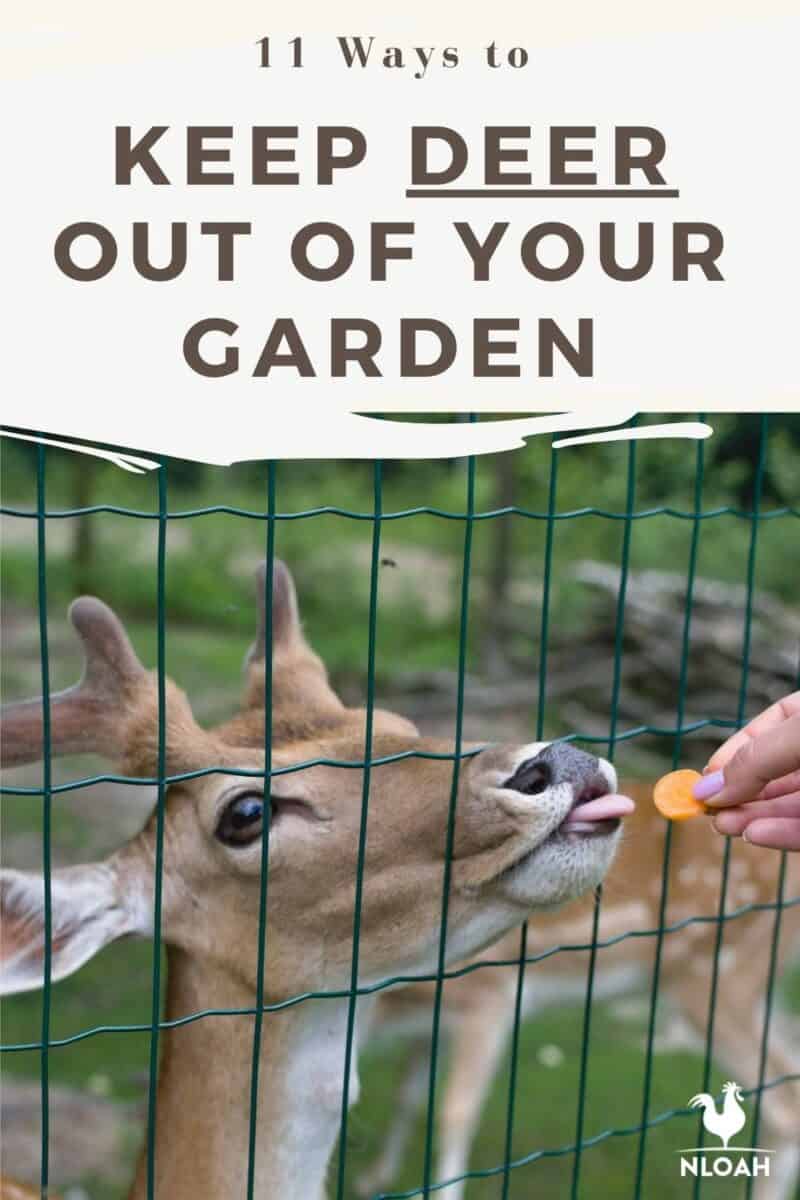Deer are amazing and majestic animals, and they also make for good sport when hunting, but if I’ve learned anything these past few years is that they’re among the most destructive, persistent, and difficult-to-stop and garden pests there are.

Worse, deer eat almost anything. Anything that you’re growing in your garden for eating (corn, veggies, etc.) deer will likely also eat, and that means you can’t depend on cutting out just one or two things that attract them. Accordingly, you’ve got to get proactive if you want to preserve your harvest.
To help you do that I’m bringing you 11 proven methods that you can integrate into a comprehensive deer-defense strategy that will hopefully keep your produce un-nibbled. Grab your tools, roll up your sleeves, and let’s get going.
DIY Irish Spring Soap Repellent
This is bound to sound crazy to some, but I promise you that it is true. Deer are repelled by the fragrance of Irish Spring bar soap. This has been a known fact for a long, long time in the US and is commonly reported as an old farmer’s trick.
Why this is, we don’t exactly know: It probably has something to do with the specific fragrance of the soap and also with soap generally which deer are likely to associate with human activity- something they shy away from since they don’t want to get shot!
This is a great technique for keeping deer out of your garden without harming any plants or any animals, or spending a fortune.
All you need to do is grab a couple of bars of Irish Spring soap and then finely chop them or grate them using a cheese grater.
Place the shavings and pieces into an old sock or into an old cut-up t-shirt before hanging them up around the perimeter of your garden. The fragrance will take care of itself.
The only downside to this method is that the fragrance will wear away with time, especially after being rained on a couple of times, and necessitate replacement. But for a budget option, it’s difficult to do better than this.
Plant Aromatics to Mask Deer-Attractive Plants
There’s another way to use scent to keep deer away from your garden, and that is by planting unappealing aromatics around the edge to hopefully mask the smell of more appealing foods within, hiding them from the sensitive noses of deer. Garlic, mint, and lavender are all good choices that work reasonably well.
The downside is that you’ll have to spend time and energy taking care of these plants like all the others if you want them to work, and the fact that they aren’t in bloom and fragrant all the time.
There’s also no guarantee that deer won’t detect the tastier morsels beyond them and simply walk past them.
Nonetheless, definitely worth a try, especially if you have any other need for these plants themselves.
Use Deer Repellent Chemicals
One of the most straightforward solutions is to repel them with specialty chemicals. These products, available in powder and liquid forms, can be purchased from wildlife control stores, hardware stores, home improvement supercenters, and of course online.
Some are ready to use as-is but others require preparation for application, but in all cases, they’re designed to repulse deer by capitalizing on their excellent sense of smell with noxious aromas.
The best part about using a repellent chemical is just how easy it is to employ. With just a few minutes of work, you can completely saturate the outer perimeter of your garden or even the outlying grounds with the chemical that will hopefully keep the deer far away.
It doesn’t get much simpler than this, but there are some shortcomings in the fact that these chemicals are often expensive and require routine reapplication to remain effective, especially after it rains or after long exposure to sunlight.
Something else to consider is that, depending on the brand and the ingredients, they might be harmful to your plants so care is required when applying.
Nonetheless, used holistically with several other deterrent options this can be a highly effective approach.
Hang Deer Nets
One traditional and, in many ways, still one of the most effective deer repellents out there is deer netting.
Available as an improvised solution that you can make yourself using tape, fishing line and some reflective marker foil or as an over-the-counter solution designed for the purpose, deer netting is quick and easy to hang around the perimeter of a garden and surprisingly good at keeping deer at a safe distance.
This type of netting basically serves as a “confidence” barrier that makes deer uneasy. It’s easy to erect compared to a fence, and it can easily be made tall enough to disincentivize deer from trying to jump over it.
No matter what type you go with, make sure that you hang strips of reflective material from the netting in order to draw a deer’s attention to it- especially if you use fishing line! You don’t want them blundering into it accidentally getting stuck or tearing it down.
It’s not the most durable solution, and it is not a true physical barrier in most circumstances, but it will definitely work to keep all but the most determined and adventurous deer out of your garden. But it can, as you might expect, be a major eyesore.
Plant a Thorny Perimeter Hedge
A solid row of plants with thorns, prickles, or just dense, tangled branches can form a physical wall that deer will be reluctant to pass through or jump over, especially if they can’t see past it.
Deer are also highly reluctant to push their way through extremely thorny plants, and no matter where you live there’s bound to be some species that is suitable for using as a spiny hedge.
Firethorn and Acacia are two diverse species worth looking into, although I must warn you that both are so viciously thorny that they can be an actual hazard to people and pets, so take care!
And like the herb plantings above I mentioned, you’ll have to care for your hedges and give them time to mature into a deer-blocking defensive wall.
Try DIY Hot Pepper Deterrent Spray
Deer don’t like peppers. Or rather, I should say they don’t like the heat associated with hot peppers because they’ll eat bell peppers and some other mild varieties with great enthusiasm.
And here’s where it gets interesting: Hot peppers evolved that spicy taste not for our own eating pleasure but as a defense mechanism against other mammals that would eat them.
You can repurpose this quirk of biology as a general-purpose deer deterrent by simmering red pepper flakes, or the flesh and seeds of any really hot peppers on your stove in a little bit of cooking oil and then mixing that with a tiny drop of dish detergent in a spray bottle full of water.
This homemade pepper spray will cling to plants, and you can use it to spray down enticing plants at the edge of your garden with the hopes that deer will nibble on them.
The hotter the better here, because when the animals get a taste of, you want it to light them up like there’s no tomorrow. Only then are they likely to leave your produce alone after that!
Install Motion Lights
Wild deer tend to be incredibly nervous, anxious animals owing to their status as prey for all kinds of carnivorous wildlife.
The slightest disturbance in their environment, especially something that raises their fear of detection and subsequent attack, is only going to make your garden a whole lot less appealing to them.
Common motion lighting solutions in the form of spotlights or specialty deer deterrent lights which flash or go off in various colors and patterns are often enough to make deer uncertain enough that they will vacate the area when activated.
They can be hung from trees, placed on stakes, or installed in any number of other ways suitable for your property and garden layout.
Some even run off of a solar charging station and battery for power, removing the sometimes complicated necessity of direct wiring them or feeding them batteries.
However, like all other methods on this list, these are not foolproof. Deer, especially ones that are used to living near urban or suburban areas, will quickly become accustomed to lights, and doubly so if you don’t reposition them, change their pattern, or use any other deterrents with them. And depending on the type, a comprehensive motion lighting setup can be expensive.
Try Noisemakers
A good companion option to motion lighting, remotely triggered or motion-activated noisemakers are a viable deer deterrent. Whether they are human-audible or ultrasonic, most are reasonably effective against deer since they have a higher range of hearing compared to people.
Used correctly when deer are getting a bit too close to the garden (versus when they first step on the property) this can give them a strong disincentive and send them running the other way. And, with a little bit of luck, give them a reason to stay away!
However, these are not the most reliable of deer deterrents. I’ve talked to lots of folks who report that they work wonderfully, and others who say they don’t do one single, damn thing- even when the devices are proven to be functional!
There’s also a reasonable chance that particularly bold deer will overcome the fear or agitation from the noise and trot right on up to get themselves a snack out of your garden.
The best advice I can give you is to use these as part of a more comprehensive defensive plan and have a backup option ready if they fail to keep deer away from your plants.
Place Motion Activated Sprinklers
As mentioned, deer are incredibly anxious and cautious animals. Any sudden stimulus, of any kind, is enough to spook them, and if they get scared badly enough, they might head for the hills and stay there.
A great deterrent solution that can “hit” multiple senses, and do absolutely zero harm to them, is a motion-activated water sprinkler.
They make noise, there’s a sudden movement and they can actually impact the deer giving them quite a fright. And, best of all, water is completely harmless.
Even better, there’s a model out there to suit any need and budget, and some really sophisticated ones will detect motion or heat, aim the sprinkler towards the source, and then fire a jet of water sort of like a robot sentry watergun!
High tech and high fun against these lowlife deer, let me tell you…
If these devices have a drawback it is that you must remember to shut them off before going out to your garden because they can’t tell friend from foe!

Install an Electric Fence
It isn’t the most elegant or attractive method, but electric fencing is undeniably effective at keeping deer away.
It might seem a little cruel, but it won’t inflict any real injury and the sharp, painful snap of contact with an electric fence wire sends a strong deterrent message to deer. If you are very lucky, the deer will run away and stay away thanks to the experience.
But, like everything else on our list, electric fencing does have some shortcomings. A typical 4- or 5-foot height electric fence is easily jumped over by deer, and sometimes they can get food fixated and won’t stay away just because they had a painful encounter.
And once one deer learns how to jump over the fence to get to the food, others will follow suit.
The good news is that installing an effective electric fence is a lot easier and probably cheaper than you might expect, so if you live in an area with a dense deer population, this is still a worthwhile and effective option.
Spray Predator Urine
Deer, like most prey animals, are extremely wary of any possible indicator that a predator might be nearby. Mountain lions, wolves, bears, and even dogs can scare the daylights out of them, and the urine from any of these species is bound to get their full and total attention.
It might be stinky, but it’s possible to get real predator urine from various hunting and pest control suppliers and also online, allowing you to use it as a deterrent and your fight against deer that are ravaging your garden.
Here’s a pro-tip: take the time to research the most common and most successful predators of deer in your area and acquire urine from that species for the purpose.
Try spraying the urine at the perimeter of your property before getting closer to your garden: you don’t want to endure the stench yourself if you don’t have to. Hopefully a little will be enough to send skittish, trespassing deer elsewhere.

Tom has lived and worked on farms and homesteads from the Carolinas to Kentucky and beyond. He is passionate about helping people prepare for tough times by embracing lifestyles of self-sufficiency.

spraying predator urine can also attract those predators depending on where you live. Males of the species will come to see either the female to mate or the male as they seem them as a interloper. I live where both bears and lions are around all the time.
Just something to think about
Use a double fence to create a run around the garden with one inner and one outer gates that are the same width as the run. Then connect it to a kennel and dog house. Rent it out to a deer hating dog like a Catahoula.